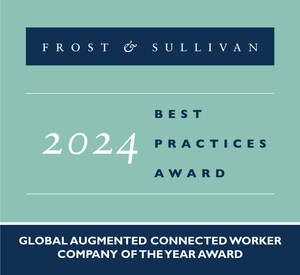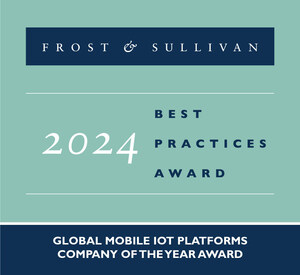Edge Computing Finds Prosperity in the Hyper-connected Industrial Landscape
The edge's unparalleled low latency makes it the only computing paradigm designed to optimize time-sensitive data, finds Frost & Sullivan
SANTA CLARA, Calif., April 16, 2019 /PRNewswire/ -- There have been three major computing revolutions in industrial applications—mainframes, client servers, and cloud computing. Taking up where these paradigms left off, edge computing is establishing itself as a foundational technology for industrial enterprises with its shorter latencies, robust security, responsive data collection, and lower costs. It is extremely relevant in the current hyper-connected industrial environment, as its solution-agnostic nature enables its use across a range of applications, including autonomous assets, remote asset monitoring, data extraction from stranded assets, autonomous robotics, autonomous vehicles, smart factories, oilfield operations management, machine monitoring and smart campuses. By 2020, 1.7 billion Industrial Internet of Things (IIoT) devices are likely to be connected to edge solutions. Further, we expect that at least 30 percent of the applications will be pushed to the edge within the next five to seven years.
Frost & Sullivan's latest thought leadership paper, All Eyes on the Edge: Transformation of Industrial Enterprise Data, underlines the importance of edge computing for industrial enterprises and manufacturers. It analyzes the emergence of an edge computing ecosystem and provides practical insights into ways to deploy the edge. Furthermore, it presents industrial use cases and their outcomes to illustrate the power of edge computing.
To download the complimentary white paper, please visit: http://frost.ly/3dt
The digital transformation journey of industrial enterprise has proven to be insufficient and, in key ways, incompatible due to the latency gap that exists between cloud and connected industrial devices. Industrial enterprises are therefore eager for technologies like the edge that will enhance their responsiveness and help them sustainably increase profitability, productivity, efficiency and safety.
"The value of data rapidly decays, and as the cloud is ill-suited for responsive data analysis, it can cause the degradation of time-sensitive data related to critical applications such as equipment failure, performance monitoring, supply chain data analysis, and predictive maintenance," explained Jared Graham, industrial consultant at Frost & Sullivan. "Only the edge is capable of offering fast turnarounds, low latency analysis, and the control required by today's industrial enterprises."
FreeWave offers a best-in-class edge solution portfolio comprised of edge hardware, application software and security, working in harmony to ensure real-time data exchange and measurable outputs. Their ZumIQ platform was designed with extensive industry and customer input to support the increasing need for network applications, analytics and high frequency data collection and processing at the remote edge.
"FreeWave's product and partner ecosystem strategy will be highly valuable with organizations placing greater emphasis on application software and analytics at the edge," added Parthesh Shastri, vp of strategy and partner development at FreeWave. "We are working with industrial enterprises and application developers to build specific data processing, asset management, and analytics capabilities to support their specific IIoT needs. This approach helps eliminate the need for multi-year, proprietary, rigid lifecycle service contracts."
Edge is clearly transformative and well positioned to unlock unprecedented benefits for industrial enterprises. Some of the key competitive advantages of edge computing include:
- Latency reduction, as its on-premise compute significantly reduces lag times associated with central cloud computing systems.
- Extensibility to host application-specific software within the edge hardware.
- Improved quality of service, as servicing of hardware is easier to manage with onsite devices distributed near key data sources and control mechanisms.
- Enhanced quality of analytics. More data can be analyzed and at a faster rate due to at-source computing.
- Does not require extensive installation and removal of previous hardware.
- Lower operational and data management costs, as the data resides within the device itself.
About Frost & Sullivan
For over five decades, Frost & Sullivan has become world-renowned for its role in helping investors, corporate leaders and governments navigate economic changes and identify disruptive technologies, Mega Trends, new business models and companies to action, resulting in a continuous flow of growth opportunities to drive future success. Contact us: Start the discussion
Contact:
Jaylon Brinkley
P: +1 210 247 2481
E: [email protected]
http://ww2.frost.com
SOURCE Frost & Sullivan
Related Links
WANT YOUR COMPANY'S NEWS FEATURED ON PRNEWSWIRE.COM?
Newsrooms &
Influencers
Digital Media
Outlets
Journalists
Opted In





Share this article